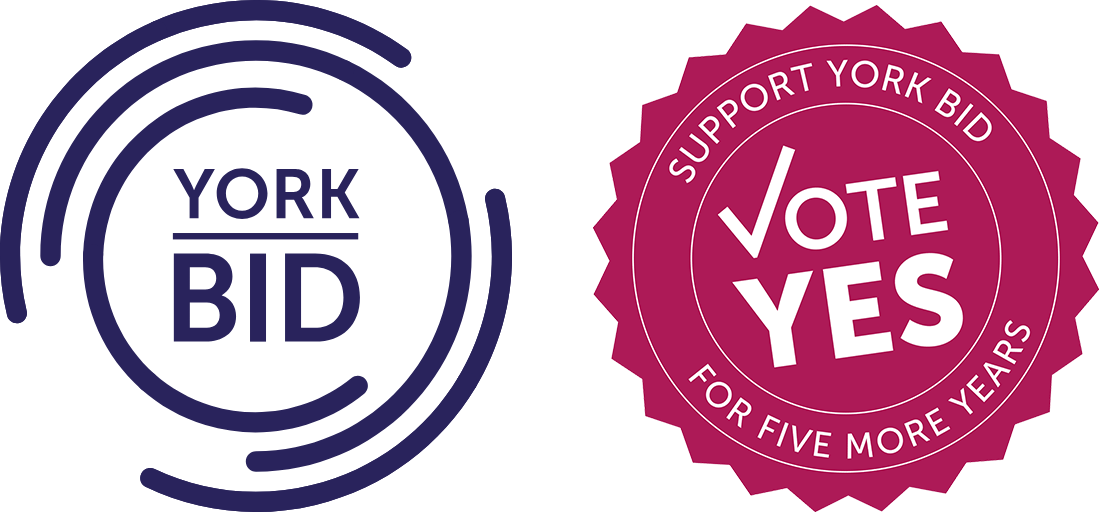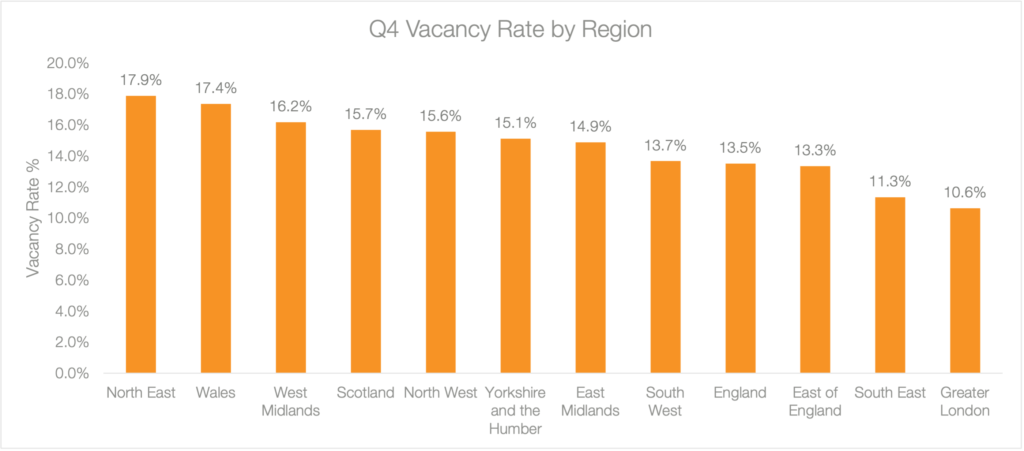York City Centre Insights – Quarter 4 2023
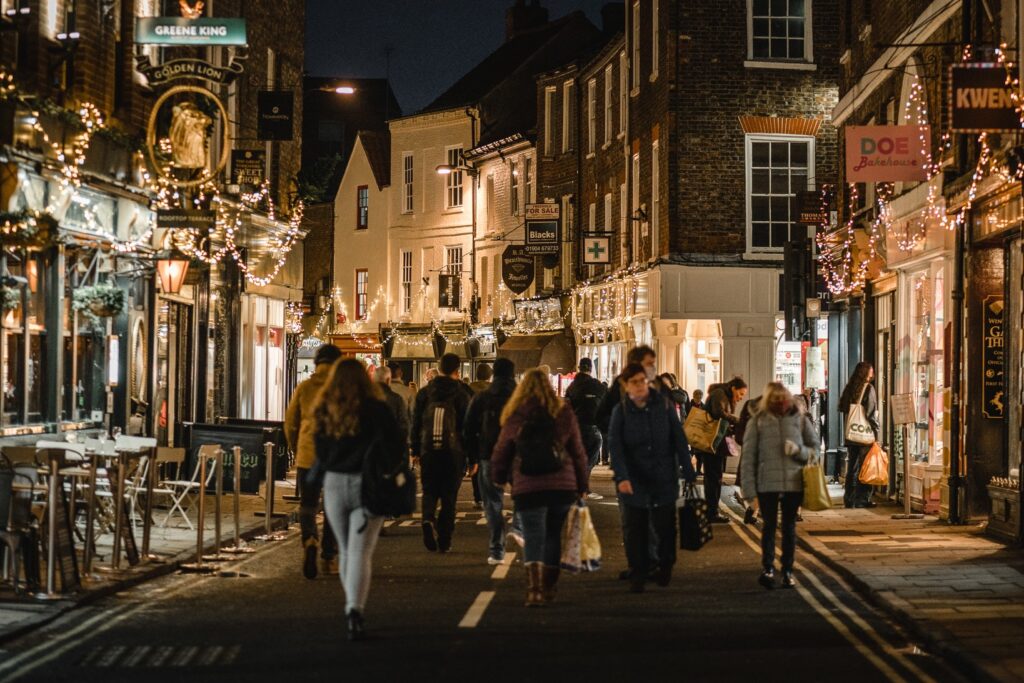
Periodically, York BID brings together data from a variety of sources in order to shed light on the economic performance of York city centre. This report focuses on the quarter 4 (Oct-Dec) 2023 and identifies key insights about our high street, such as footfall, spend and hotel occupancy.
We are strong believers that data can be a useful indicator of our high street’s ‘health’ and a tool to shape local policy. Where as figures shown in isolation draw few conclusions, data recorded consistently over long periods can be powerful, especially when making comparisons between yearly, quarterly and monthly periods.
FOOTFALL
The number of visitors to York city centre recorded during quarter 4 (Oct-Dec) of 2023 was up by 17.5% when compared to the same period in the previous year, and up by 2.7% compared to the last recorded pre-COVID levels. The total number of visitors recorded during 2023 was up by 6.2% compared to 2022 (See figure 1).

The highest number of monthly visitors was recorded during December. According to Springboard data, footfall in December was up by 36.1% compared to the previous year, and 20.2% up on December 2019 (pre-COVID) (See figure 2). It is thought that the footfall camera located on Parliament Street was partially blocked in previous years during the Christmas markets, and the new configuration of the markets can account for the steep rise.
Data held by City of York Council indicates that during December 2023, the average dwell time of visitors to the city centre was 1 hour 43 minutes, which is a 2% increase on the same month in the previous year.

SPEND
Spend made via VISA card transactions in city centre businesses during quarter 4 increased by 10.0% compared to the same period in the previous year. Total spend recorded during 2023 was up by 3.9% compared to the total for 2022 (See figure 3).

(source: VISA). Amounts do not include spend made by overseas visitors.
The highest monthly spend total was recorded during December, which was up by 13.5% compared to the same month in the previous year (See figure 4). Some of the comparative increase in spending levels may be due to inflation and the increased price of goods.

ORGIN OF SPEND/VISITATION
Out of the total number of visits recorded during quarter 4, 31.3% were made by residents of York Local Authority area, whereas 43.2% travelled from over 50km away.
Out of the total spend recorded during quarter 4, 27.4% was made by residents of York Local Authority area, whereas 45.4% was made by visitors travelling from over 50km away (See figure 5).
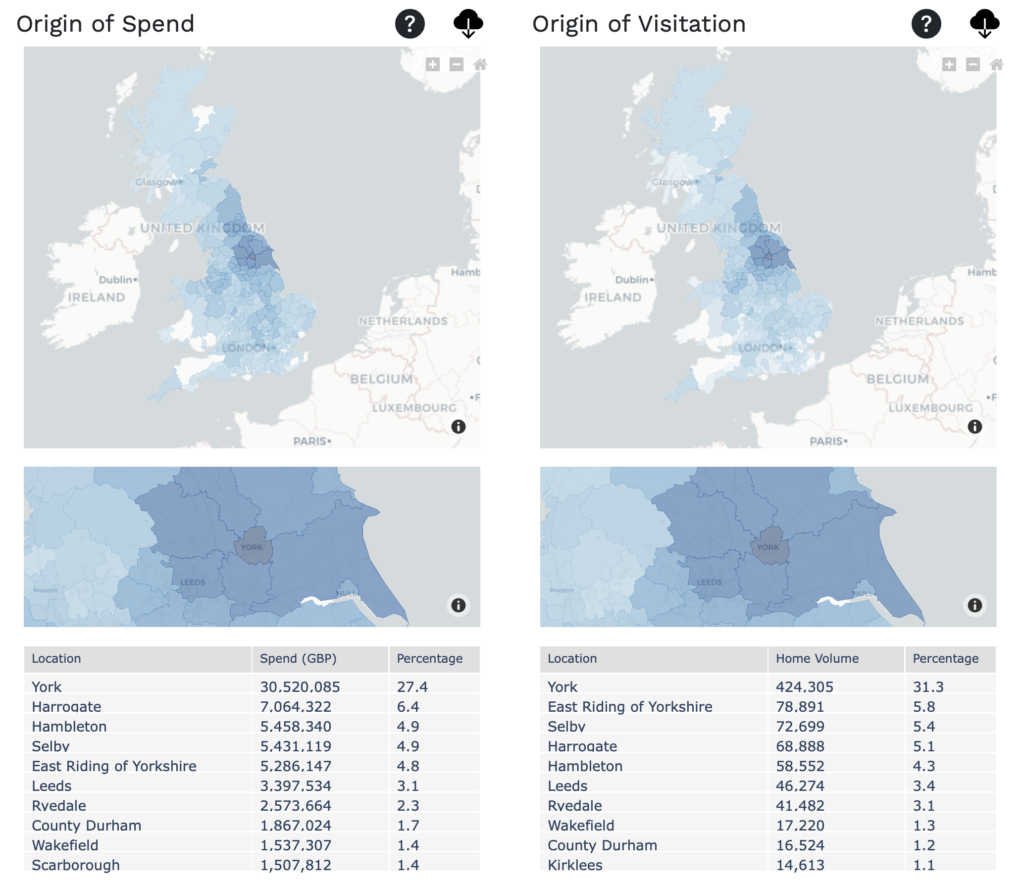
(source: VISA)
SPEND BY SECTOR
During quarter 4, the retail and hospitality sectors experienced a significant increase in total spend compared to the same period in the previous year. The biggest uplift was seen across Food & Drink, which was up by 44.2%, Hotel & Accommodation was up by 32.0% and Personal Care was up by 27.9%. Restaurants & Bars saw an increase of 8.1%, Retail & High Street an increase 6.8%, whereas Clothing was down by -17.8% (See figure 6).
The average transaction value in Restaurants & Bars increased by 5.7% and the number of transactions increased by 1.9%. The average transaction value in Retail & High Street businesses decreased by -13.6% but the number of transactions increased by 23.9%.

INTERNATIONAL SPEND
Figure 7 identifies the top ten highest spending countries during quarter 4 (according to VISA) and shows the % year-on-year increase/decrease when compared to the same period in 2022. The most significant uplift was witnessed in spend via card transaction made by Chinese visitors, which increased by 67.1% compared to the previous year.
It is worth noting that VISA’s market share differs from country-to-country. It would therefore be misleading to attempt like-for-like comparisons between spending totals.

HOTEL OCCUPANCY
Monthly hotel occupancy levels during quarter 4 were 1.3% up on average compared to the same period in the previous year. Total yearly occupancy levels during 2023 were 7% higher, on average, compared to 2022 (See figure 8).

(source: Hospitality Association York)
SHOP VACANCY
Shop vacancy levels in York city centre at the end of quarter 4 stood at 8.9%, which is a 1% increase on the same period in the previous year, but -0.3% down on the previous quarter. York city centre vacancy levels have remained well below the national average for UK high streets for several years, which was last recorded at 14.0% (See figure 9).
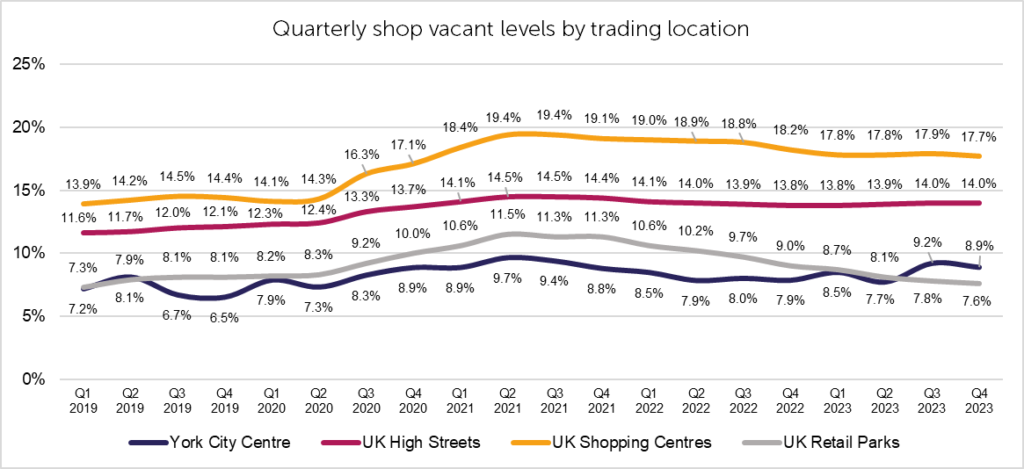
The average vacancy rate for Yorkshire and the Humber was recorded at 15.1%, at the end of 2023, standing at 6.2% higher than York (See figure 10).
To see our previous reports, please visit our Insights & Trends page. If you have any questions regarding the data, you are welcome to contact a member of the BID Team at chris.bush@theyorkbid.com.
